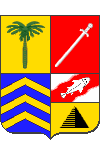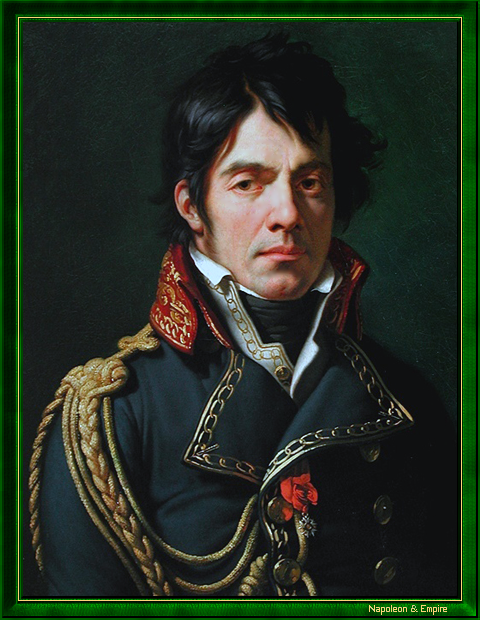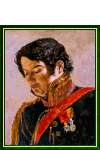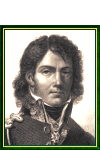Dominique-Jean Larrey
Surgeon-in-Chief of the Grande Armée, Commander of the Legion of Honor, Baron of the Empire
Pronunciation:

Dominique-Jean Larrey was born on July 7, 1766 in Beaudéan, Haute-Bigorre.
Orphaned at the age of thirteen, he was raised by his uncle, a surgeon in Toulouse, and studied medicine in the pink city, then at the Hôtel-Dieu in Paris.
In 1787, he began his career as a surgeon in the Royal Navy, before being appointed to the Invalides.
In 1792, he was appointed to the Army of the Rhine; that same year, he transformed the light ambulances created by François Percy into flying ambulances with which, under fire, he relieved the wounded, friend and foe alike, in order to treat them as quickly as possible, without distinction of nationality or rank.
He soon became senior surgeon and then chief surgeon in the Republican army. He directed the Toulon School of Surgery and Anatomy, then in 1796 taught at the newly-created Val-de-Grâce Military Health School, before joining the Italian army, where he was in charge of camp and hospital inspection.
He followed Napoleon Bonaparte on all his campaigns, first in the deserts of Egypt and Syria, then on the battlefields of Europe. At a time when anesthesia didn't exist, it took him less than a minute to amputate a limb, the only way to avoid infection and death from septicemia. During the battle of Preussisch-Eylau, he performed eight hundred operations in three days. When he's not amputating, he's trying to find a sign of life in the bodies littering the battlefield. He visits the wounded at all hours of the day and night. He torments the generals whenever he needs supplies for the wounded or sick.
His dedication was well rewarded: in 1804, he received one of the first Officer's Crosses of the Legion of Honor, was made a Baron on the battlefield of Wagram in 1809, and was appointed Inspector General of the Military Health Service in 1810.
In 1813, after the battles of Lützen and Bautzen, some officers claimed that soldiers had voluntarily mutilated themselves, and wanted to set an example. Larrey argued on behalf of the wounded to Napoleon I, saving them from the firing squad.
At Waterloo, two anecdotes illustrate the high regard in which he is held. Wellington, spotting him on the battlefield, raised his bicorne and said: Je salue l'honneur qui passe (I salute the passing honor)
. Later that day, wounded and captured by the Prussians, he was released on the personal orders of Blücher, whose son he had nursed a few years earlier.
Disgraced under the Restoration, he returned to service under the July Monarchy.
Ill in Algeria, he died on July 25, 1842 in Lyon, and is buried in the Père-Lachaise cemetery (division 37) , Paris. The epitaph on his tombstone reads: To Larrey, the most virtuous man I have ever known
. His remains were transferred to Les Invalides in 1992, where he now rests in the crypt of the governors of Saint-Louis cathedral.
"Baron Dominique-Jean Larrey, Chief Surgeon to the Grande Armée" by Anne-Louis Girodet-Trioson (Montargis 1767 - Paris 1824).

Larrey's name is inscribed on the 30th column (south pillar) of the Arc de Triomphe de l'Étoile.
In 1964, Les Postes de la République Française issued a 0.25 F stamp bearing the effigy of Dominique-Jean Larrey .
Other portraits

"Baron Dominique-Jean Larrey". Nineteenth century French school.

"Baron Dominique-Jean Larrey", by Jean-Baptiste Paulin-Guérin (Toulon 1783 - Paris 1855).

"Baron Dominique-Jean Larrey". Etching by Victor Florence Pollet (Paris 1811 - Mayenne 1882).